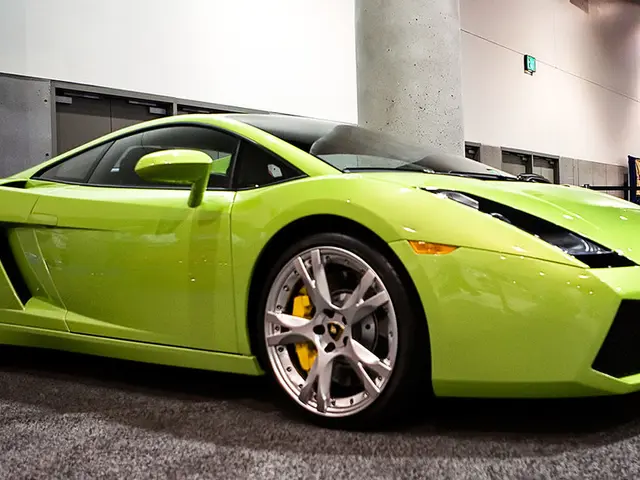F1 film leaves doubt: Unreal Engine almost deceived perception
Unreal Engine Brings Formula 1 to Life in Impressive CG Cinematic
In a groundbreaking move, the latest cinematic for Formula 1 has been created using Epic Games' game development software, Unreal Engine 5.6. This fully CG production, inspired by Formula 1, focuses on action, adrenaline, and high speed, delivering an immersive racing experience that rivals real-life footage.
The cinematic, which has been generating a buzz among audiences, achieves an impressive level of photorealism. Its pace and action engage viewers, with parts that look like real movie footage. The work of Unreal Engine auto animator, 'Post Processed', has been highlighted for his contribution, with his previous work on Aston Martin's CGI ads being widely praised.
Unreal Engine's key features have played a significant role in the cinematic's creation. Nanite virtualised geometry allows for the creation of ultra-detailed car models without compromising performance. Lumen global illumination delivers dynamic lighting and reflections, enhancing the realism of car surfaces and environments.
The cinematic's creators have also employed various techniques to generate realistic animations. Metahumans and video footage have been used to create lifelike facial animations, with careful mesh adjustments and camera control enhancing character reaction performances. The Level Sequencer tool has been used to build cinematic sequences with dramatic camera angles, lighting for mood, and depth of field that adds a cinematic feel.
Additional techniques used include creating custom materials and effects, such as fake cloud shadows, through material functions to add realism and dynamic environment elements. Disabling player input during cutscenes ensures a smooth cinematic experience, maintaining focus on the camera and animation.
While direct animator commentary on the F1 movie specifically is limited, these workflows highlight key techniques animators use in Unreal Engine 5.6 to create high-quality cinematic animations. For those seeking detailed animator tips on the F1 movie, interviews or behind-the-scenes from the creators might provide more insight.
Unreal Engine is becoming a popular solution for car animation, with its combination of real-time rendering, physics simulation, and cinematic tools making it a go-to choice. Its vehicle blueprint system can simulate suspension, tyre friction, weight transfer, and terrain interaction. Its built-in camera systems and level sequencing enable the choreography of complex sequences.
Moreover, Unreal Engine is also becoming a go-to solution for static shots due to its lighting capabilities. If you're interested in learning more about Unreal Engine, there are numerous tutorials available. The creator of the F1 cinematic has shared car rigging and rendering tips on his YouTube channel, demonstrating why Unreal Engine is a powerful tool for car animation.
In conclusion, the F1 movie animation created with Unreal Engine 5.6 is a testament to the power of game development software in creating high-quality cinematic animations. Its immersive racing sequences are impressing audiences, blurring the line between reality and simulation.
- Creators of the Formula 1 cinematic employed Unreal Engine's Level Sequencer tool to build cinematic sequences with dramatic camera angles, lighting for mood, and depth of field, adding a cinematic feel.
- Unreal Engine's Nanite virtualised geometry allows for the creation of ultra-detailed car models without compromising performance, contributing to the photorealism of the cinematic.
- The work of Unreal Engine auto animator, 'Post Processed', has been highlighted for his contribution to the F1 cinematic, with his previous work on Aston Martin's CGI ads being widely recognized.
- Unreal Engine's vehicle blueprint system can simulate suspension, tyre friction, weight transfer, and terrain interaction, making it a popular solution for car animation.
- To create lifelike facial animations, the creators of the F1 cinematic used Metahumans and video footage, with care given to mesh adjustments and camera control enhancing character reactions.
- For those seeking detailed animator tips on the F1 movie, interviews or behind-the-scenes from the creators might provide more insight.
- Unreal Engine is also becoming a go-to solution for static shots due to its lighting capabilities, with numerous tutorials available to learn more about its features and techniques.




